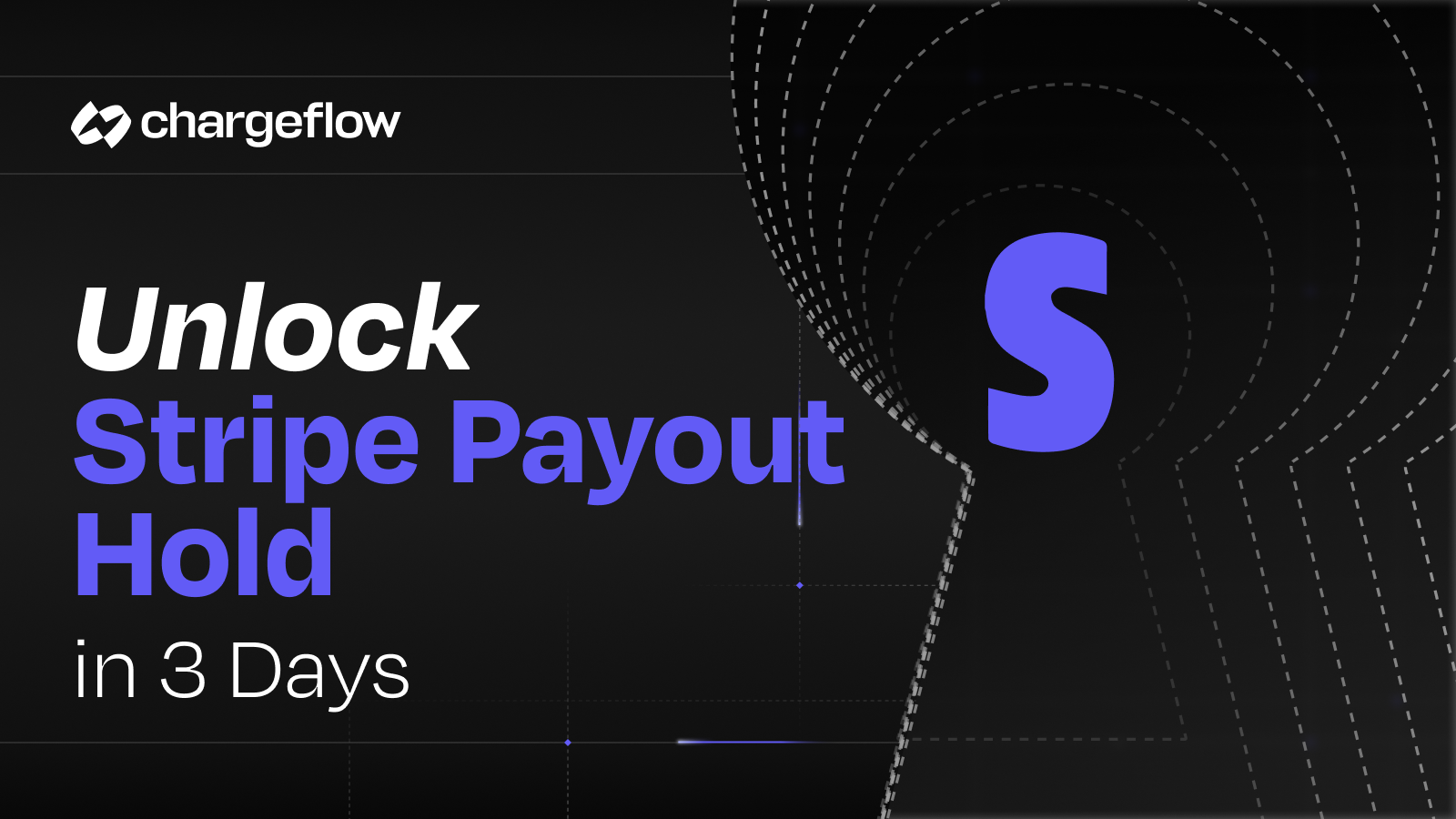Unveiling the Lurking Threat: Push Payment Fraud Targeting E-commerce Store Owners

Chargebacks?
No longer your problem.
Recover 4x more chargebacks and prevent up to 90% of incoming ones, powered by AI and a global network of 15,000 merchants.
Beware of the lurking threat of push payment fraud for e-commerce store owners. Stay secure and safeguard your business with our proactive measures.
As a merchant, you have invested countless hours, resources, and passion into building your online store, catering to customers far and wide. However, amidst this vibrant digital landscape, a sinister threat looms in the shadows – push payment fraud.
Picture this: you wake up one morning, excited to check your online sales, only to discover that a significant portion of your hard-earned revenue has vanished into thin air. Your heart sinks, and a sense of betrayal sets in. How could this happen? Unfortunately, push payment fraud has become a stealthy and pervasive menace that targets e-commerce store owners like yourself.
But fear not, for knowledge is power.
In this article, we will shed light on the lurking threat of push payment fraud and empower you with the tools and insights needed to protect your business. Whether you're an established e-commerce tycoon or just starting out, understanding push payment fraud is paramount to safeguarding your financial well-being.
So, what exactly is push payment fraud? In simple terms, it refers to a cunning scheme where fraudsters manipulate unsuspecting victims into authorizing fraudulent payments willingly. Unlike traditional cyber attacks, which rely on hacking or stolen information, push payment fraud preys on human vulnerabilities and exploits the trust we place in digital transactions.
In the following sections, we will delve into the intricacies of push payment fraud, unravel its inner workings, and equip you with the knowledge needed to identify and prevent it.
Stay with us on this journey as we navigate the treacherous waters of push payment fraud. By the end of this article, you will emerge armed with practical strategies, industry best practices, and an unwavering commitment to protect your e-commerce store from this lurking threat.
Understanding Push Payment Fraud
As an e-commerce store owner, it's crucial to have a comprehensive understanding of push payment fraud and how it can impact your business. By familiarizing yourself with the inner workings of this fraudulent scheme, you can take proactive measures to protect your online store and your customers. Let's delve into the world of push payment fraud and explore how it poses a lurking threat to merchants like yourself.
How Push Payment Fraud Works
Push payment fraud involves criminals tricking individuals or businesses into making payments to fraudulent accounts or diverting funds to unauthorized recipients. These fraudsters often exploit vulnerabilities in the payment process, taking advantage of unsuspecting victims and their trust.
- Fraudsters may pose as customers, suppliers, or business partners, leveraging various techniques to deceive merchants into initiating payments to fraudulent accounts.
- They may manipulate invoice details, redirecting payments to their own accounts instead of legitimate recipients.
- Social engineering tactics, such as impersonation or account takeover, are also commonly employed to deceive merchants into authorizing fraudulent transactions.
The Impact on E-commerce Businesses
Push payment fraud can have severe consequences for e-commerce businesses, both financially and reputationally. By understanding the potential impact, you can better appreciate the urgency of implementing preventive measures.
- Financial Loss: Successful push payment fraud can result in significant financial losses, impacting your revenue and profitability.
- Customer Trust: Falling victim to fraud can erode your customers' trust in your store, leading to a decline in sales and potential customer churn.
- Reputational Damage: Fraud incidents can tarnish your reputation, making it harder to attract new customers and retain existing ones.
- Legal and Regulatory Consequences: Non-compliance with relevant laws and regulations regarding fraud prevention can expose your business to legal liabilities and penalties.
Identifying Vulnerabilities
As an e-commerce store owner, it's crucial to be aware of the vulnerabilities that can expose your business to push payment fraud. By understanding and addressing these weak points, you can take proactive measures to protect your store and customers.
Let's explore the key areas where vulnerabilities can lurk:
Payment Process Weaknesses
- Inadequate verification procedures: Ensure that your payment process includes robust identity verification measures, such as two-factor authentication, to minimize the risk of fraudulent transactions.
- Weak password policies: Encourage your customers to create strong passwords and implement a password strength indicator to prevent unauthorized access to their accounts.
- Unencrypted connections: Make sure that all payment transactions are conducted over secure, encrypted connections (HTTPS) to safeguard sensitive data.
Data Breach Risks
- Insufficient data security measures: Regularly assess your data security protocols to protect customer information from potential breaches. Encrypt customer data and restrict access to authorized personnel only.
- Insecure third-party integrations: If you integrate third-party applications or services with your e-commerce platform, verify their security practices and ensure they comply with industry standards.
Phishing and Social Engineering Attacks
- Employee awareness and training: Educate your employees about common phishing techniques and the importance of not sharing sensitive information via email or phone calls. Implement email filters and provide training on identifying suspicious emails or links.
- Customer education: Help your customers recognize phishing attempts by providing clear guidelines on how to identify legitimate communication from your store. Warn them about the risks of sharing personal or financial information with unverified sources.
Software Vulnerabilities
- Regular software updates: Keep your e-commerce platform, plugins, and extensions up to date with the latest security patches. Vulnerabilities in outdated software can be exploited by fraudsters.
- Secure coding practices: Work with experienced developers who follow secure coding practices to minimize the risk of introducing vulnerabilities during the development process.
Insider Threats
- Limited employee access: Implement a role-based access control system to ensure that employees only have access to the necessary systems and data required to perform their tasks.
- Monitoring and auditing: Regularly monitor and audit employee activities to detect any suspicious behavior or unauthorized access attempts.
Types of Push Payment Fraud
Push payment fraud is a menacing threat that every e-commerce store owner must be aware of. As a merchant, understanding the different types of push payment fraud is crucial to protect your business and your customers.
Let's dive into the various types of push payment fraud and how they can impact your e-commerce store:
1. Card-not-present (CNP) Fraud
- In CNP fraud, fraudsters make unauthorized purchases using stolen credit card details without physically presenting the card.
- They exploit vulnerabilities in the online payment process, often targeting e-commerce stores with weak security measures.
- Fraudsters may use stolen card information to place large orders or make multiple small transactions, leading to financial losses for merchants.
2. Account Takeover (ATO) Fraud
- ATO fraud occurs when fraudsters gain unauthorized access to a customer's account, allowing them to make fraudulent purchases using the account holder's information.
- They often employ tactics such as phishing, social engineering, or brute force attacks to acquire login credentials.
- Once in control of an account, fraudsters can exploit saved payment methods, leading to unauthorized transactions and financial harm.
3. Invoice Redirection Scams
- In this type of fraud, scammers intercept legitimate invoices sent from e-commerce stores to their customers and alter the payment details.
- They typically impersonate the store or the payment gateway, providing their own fraudulent bank account information for customers to make payments.
- Unsuspecting customers unknowingly make payments to the fraudsters' accounts, resulting in financial losses for both customers and merchants.
4. Impersonation Fraud
- Impersonation fraud involves fraudsters pretending to be customers, suppliers, or even employees of e-commerce stores to deceive merchants into processing fraudulent payments.
- They exploit social engineering techniques and manipulate communication channels, often using email or phone calls, to gain merchants' trust and convince them to make unauthorized transactions.
- This type of fraud can lead to significant financial losses and reputational damage for e-commerce store owners.
Preventive Measures for E-commerce Store Owners Against Push Payment Fraud
Implementing the right preventive measures can safeguard your financial transactions and customer data. By staying one step ahead of fraudsters, you can instill trust in your customers and maintain the integrity of your online store. Here are some crucial preventive measures you should consider:
1. Strengthen Authentication and Verification Systems
- Implement multi-factor authentication (MFA) for customer accounts to ensure secure logins.
- Utilize strong and unique passwords and encourage your customers to do the same.
- Employ advanced verification methods, such as biometric authentication, to enhance security.
2. Choose Secure Payment Gateways and Fraud Detection Tools
- Select reputable payment gateways that offer robust security features and encryption protocols.
- Integrate fraud detection tools that employ machine learning algorithms to identify suspicious activities and transactions.
- Regularly update and patch your payment systems to protect against known vulnerabilities.
3. Educate Yourself and Your Team
- Stay informed about the latest fraud trends, techniques, and indicators to spot potential risks.
- Train your staff on identifying and handling suspicious transactions or customer inquiries.
- Provide ongoing education and awareness programs to keep your team vigilant against emerging threats.
4. Establish Policies and Procedures to Mitigate Fraud Risks
- Develop comprehensive fraud prevention policies and communicate them clearly to your team.
- Implement stringent authorization processes for high-value transactions.
- Regularly review and update your policies to adapt to evolving fraud tactics.
5. Monitor and Analyze Customer Behavior
- Implement a system to monitor customer behavior and detect anomalies in purchasing patterns.
- Use data analytics tools to identify any unusual spikes in transaction volumes or suspicious activities.
- Set up alerts and notifications for potential fraudulent activities and investigate them promptly.
6. Collaborate with Industry Partners
- Engage with industry associations, payment processors, and financial institutions to stay updated on fraud prevention best practices.
- Participate in forums and share experiences with other e-commerce store owners to learn from their insights.
- Consider joining fraud prevention networks or initiatives to collectively combat push payment fraud.
7. Stay Compliant with Legal and Regulatory Requirements
- Familiarize yourself with relevant laws and regulations related to push payment fraud.
- Understand your responsibilities as an e-commerce store owner in preventing and reporting fraud incidents.
- Cooperate with law enforcement agencies and financial institutions when required.
Mitigation Strategies for E-commerce Store Owners
As an e-commerce store owner, safeguarding your business from push payment fraud is of utmost importance. By implementing the following mitigation strategies, you can protect your online store and customer transactions while maintaining trust and security.
1. Strengthen Authentication and Verification Systems
- Enhance password security: Encourage customers to create strong, unique passwords and implement multi-factor authentication for added protection.
- Utilize CAPTCHA: Implement CAPTCHA verification during checkout to prevent automated attacks and ensure human interactions.
- Employ address verification services (AVS): Validate customer billing addresses to minimize fraudulent transactions.
2. Secure Payment Gateways and Fraud Detection Tools
- Choose reliable payment gateways: Opt for reputable payment service providers that offer robust security features, such as tokenization and encryption, to safeguard sensitive customer information.
- Implement fraud detection systems: Utilize advanced fraud detection tools that employ machine learning algorithms to identify suspicious patterns and behaviors in real-time.
3. Educate Store Owners and Employees
- Stay updated on fraud trends: Regularly educate yourself and your staff about the latest push payment fraud techniques and prevention strategies.
- Train employees on recognizing red flags: Teach your team to identify potential signs of fraudulent activity, such as unusual customer behavior, mismatched billing information, or suspicious orders.
- Establish protocols for handling fraud incidents: Create clear guidelines on how to handle suspected fraudulent transactions and provide employees with step-by-step procedures to follow.
4. Establish Policies and Procedures
- Implement transaction verification processes: Develop protocols for verifying high-value or suspicious transactions, such as contacting customers directly to confirm their intent.
- Set transaction limits and thresholds: Define maximum transaction amounts and implement restrictions to minimize the risk of large-scale fraudulent activities.
- Establish refund and chargeback policies: Clearly communicate your refund and chargeback policies to customers, ensuring transparency and managing disputes effectively.
5. Regular Risk Assessments and Audits
- Conduct periodic risk assessments: Assess your e-commerce store's vulnerabilities and identify potential weak points in your payment process.
- Perform internal audits: Regularly review and analyze transaction data, payment logs, and customer feedback to detect any anomalies or potential fraud patterns.
- Engage third-party security audits: Seek the expertise of security professionals to perform external audits and ensure the integrity of your systems and processes.
6. Incident Response and Management Procedures
- Develop an incident response plan: Create a detailed plan outlining the steps to take in the event of a suspected or confirmed push payment fraud incident.
- Establish communication channels: Designate responsible individuals or teams for reporting and escalating fraud incidents promptly.
- Collaborate with authorities and financial institutions: Foster relationships with law enforcement agencies and financial institutions to facilitate the reporting and investigation of fraudulent activities.
7. Collaboration and Sharing Best Practices
- Engage in industry collaborations: Join industry forums, associations, or organizations dedicated to combating push payment fraud to exchange information and best practices.
- Share knowledge and experiences: Contribute to the collective effort by sharing your own insights and experiences with fellow e-commerce store owners, fostering a community-driven approach to fraud prevention.
Final Thoughts
As an e-commerce store owner, the threat of push payment fraud is a lurking danger that can have devastating consequences for your business. Throughout this article, we've explored the intricate web of this fraudulent activity and provided you with valuable insights and strategies to safeguard your online store.
Your Business, Your Protection
Protecting your e-commerce store from push payment fraud requires a proactive and multifaceted approach. By following the strategies and best practices outlined in this article, you can significantly reduce the risk of falling victim to fraudulent activities.
Remember, staying one step ahead of fraudsters is not only crucial for your financial well-being but also for maintaining the trust and loyalty of your valued customers.
Safeguard Your Future
As you navigate the dynamic landscape of e-commerce, it's vital to stay vigilant and adaptable. Continuously assess your fraud prevention plan, conduct regular risk assessments and audits, and explore innovative technologies that can enhance your defenses.
By prioritizing security and adopting a comprehensive approach to combating push payment fraud, you are positioning your e-commerce business for a successful and secure future.
In a world where threats are ever-evolving, your commitment to protecting your business sets you apart as a responsible and reliable merchant. Stay informed, stay proactive, and stay secure. Together, we can keep push payment fraud at bay and pave the way for a thriving e-commerce landscape.
Remember, your vigilance is the key to thwarting the lurking threat of push payment fraud.

Chargebacks?
No longer your problem.
Recover 4x more chargebacks and prevent up to 90% of incoming ones, powered by AI and a global network of 15,000 merchants.






























.png)








